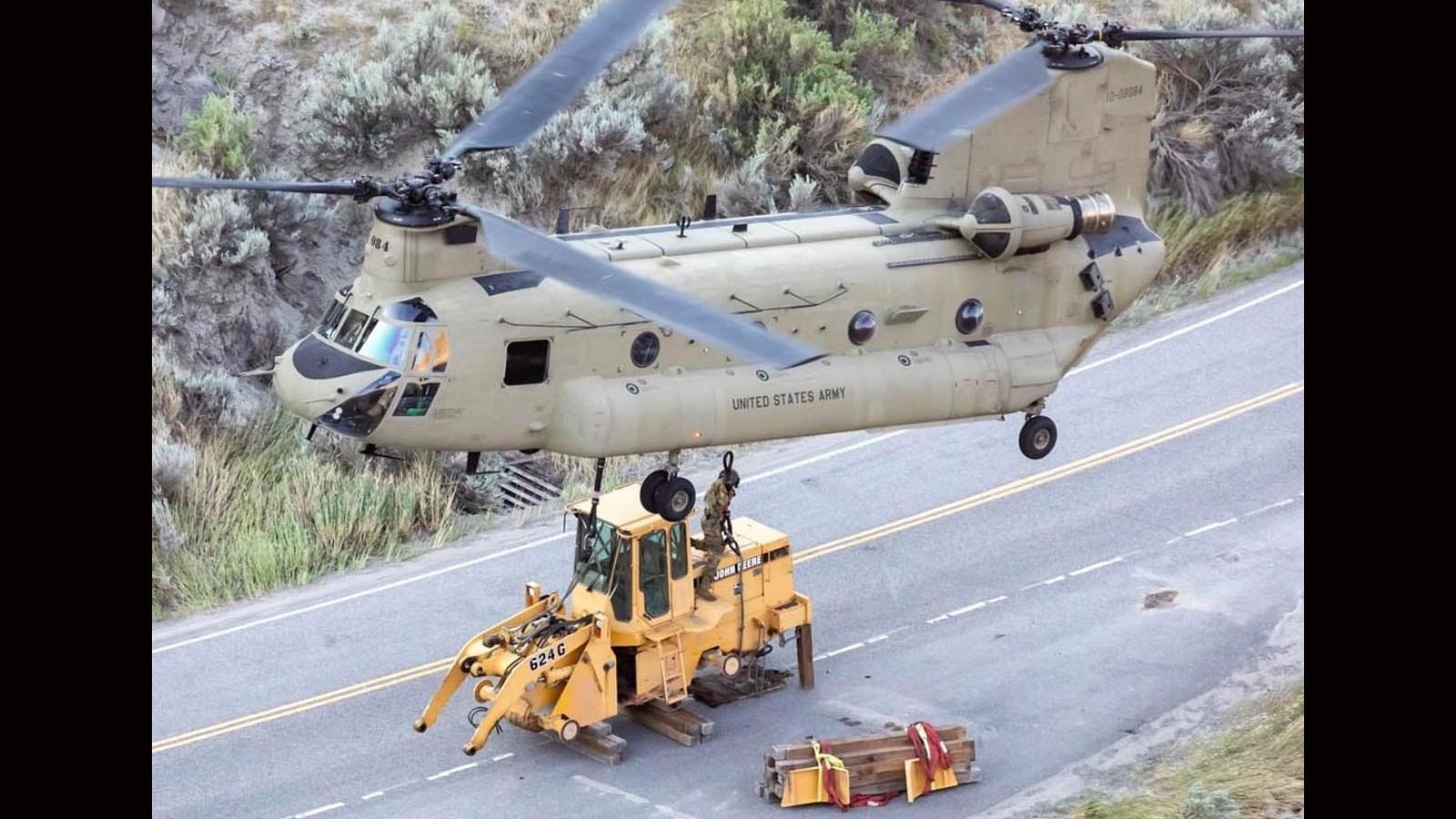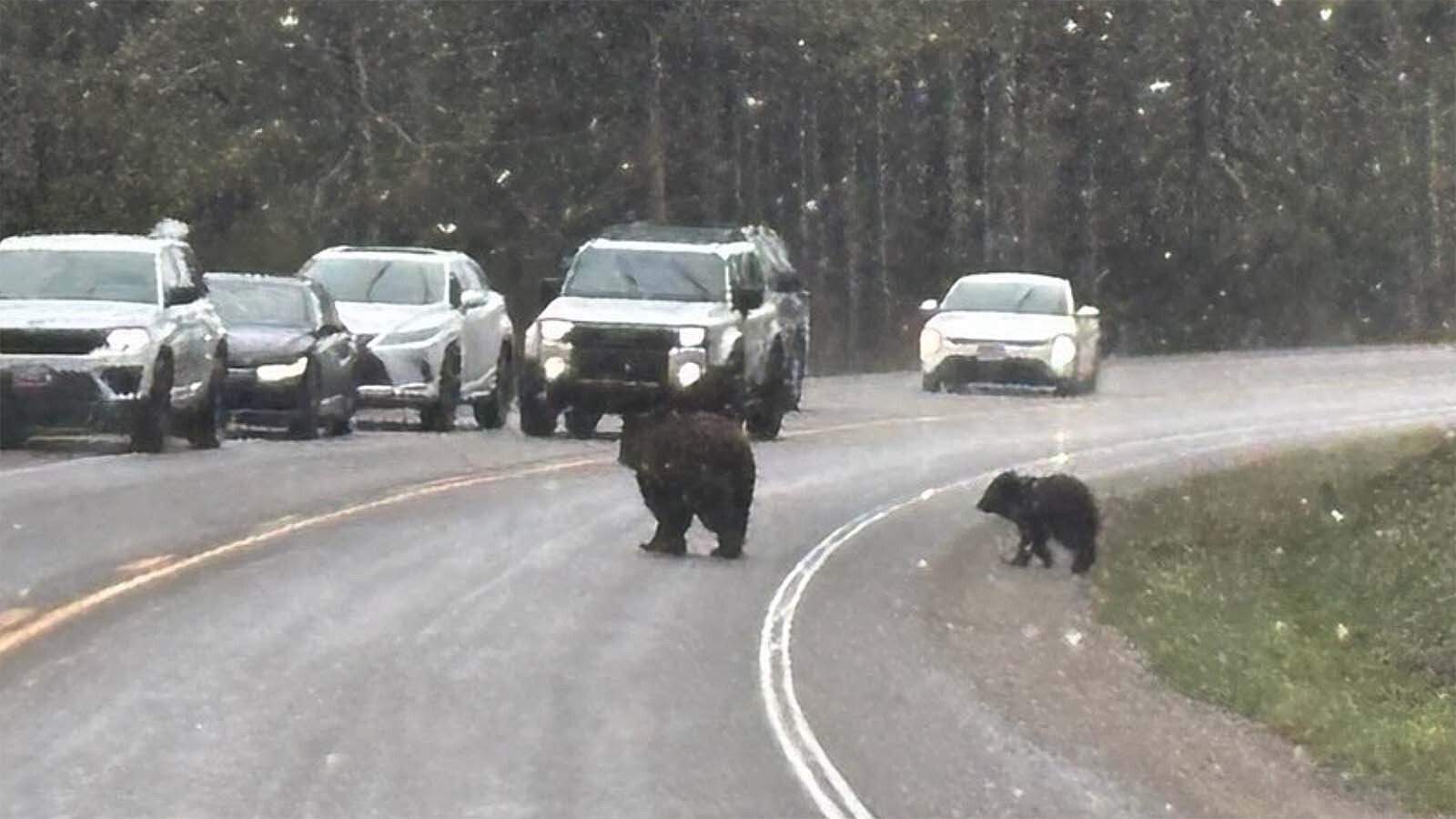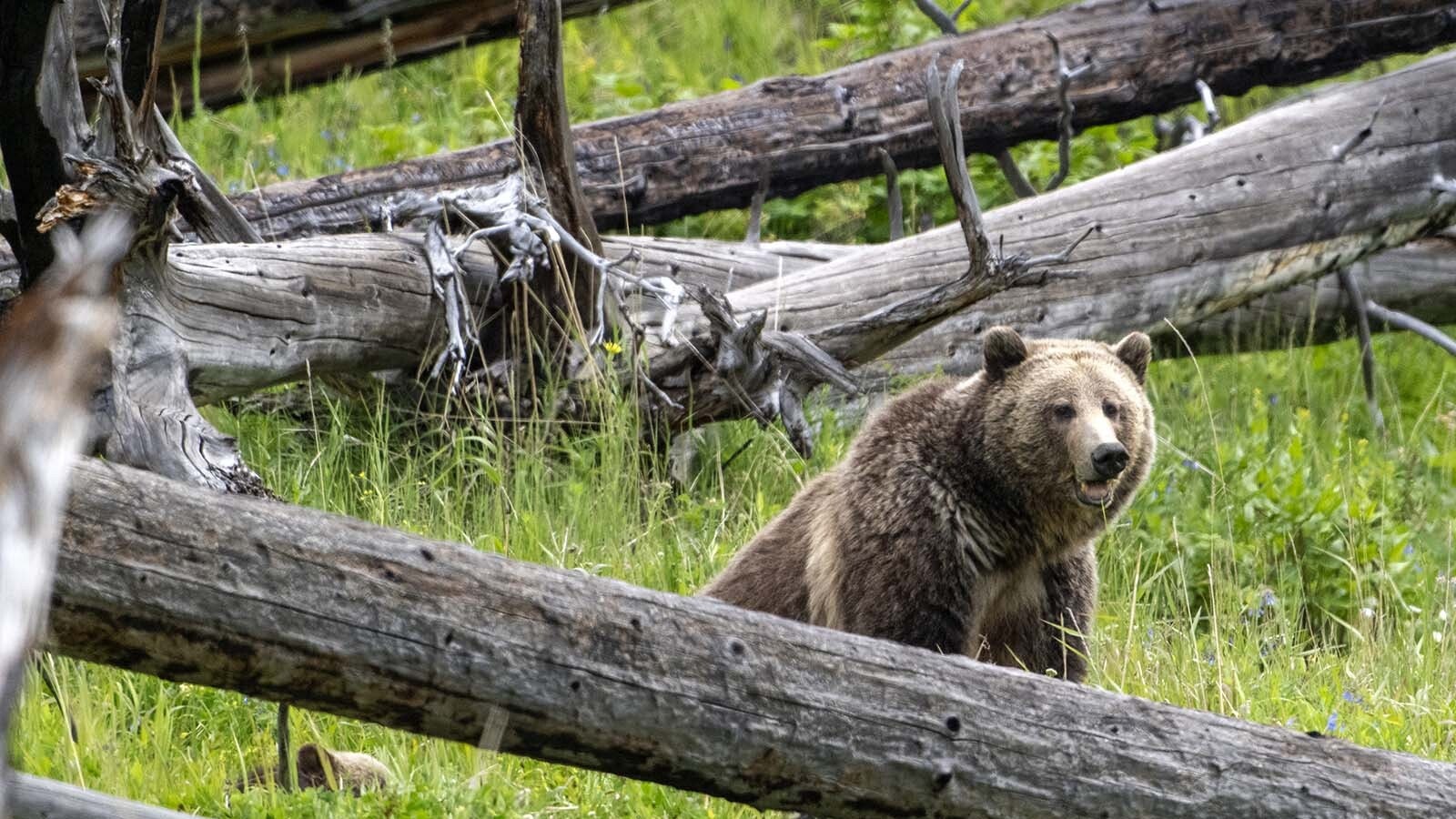When Yellowstone National Park had a massive problem — in the form of a stranded front-end loader – the National Guard had a massive solution, in the form of a CH-47 Chinook helicopter.
The Guard was called on August 17 after the loader was stranded on a washed-out section of highway just outside of the park’s north entrance, MSgt. Michael Touchette told Cowboy State Daily. He’s a public affairs specialist with the Montana Army National Guard.
The helicopter crew is with the Montana Army National Guard’s 1-189th General Support Aviation Battalion. The Guard and Yellowstone Park posted brief summaries and photos of the incident on social media.
Calls and messages to the Yellowstone public information office were not returned on Friday.
When the helicopter crew was informed of the loader’s total weight, they determined it was too heavy for the airship to lift, Touchette said. The Park Service asked if removing the machine’s front bucket and wheels would help.
“We said, ‘yeah, if you pull the tires and the bucket off, the Chinook should be able to lift it with no problem,’” he said.
Touchette said he arrived at the scene in a different helicopter to take photos.
“The bucket and tires were already gone by the time I got there,” he said. “I’m not sure how they were moved.”

The helicopter moved the main body of the loader about ¾ of a mile with ease, he said.
“That road (where the loader was) was in terrible shape. I don’t think I would have wanted to even try walking up that road,” he said.
The Guard’s social media posts about moving the loader have been among their most popular, keeping pace with earlier posts about helping to evacuate people during the Yellowstone floods this spring and early summer, Touchette said.
“When we moved this big tractor, people just found that really interesting,” he said.





